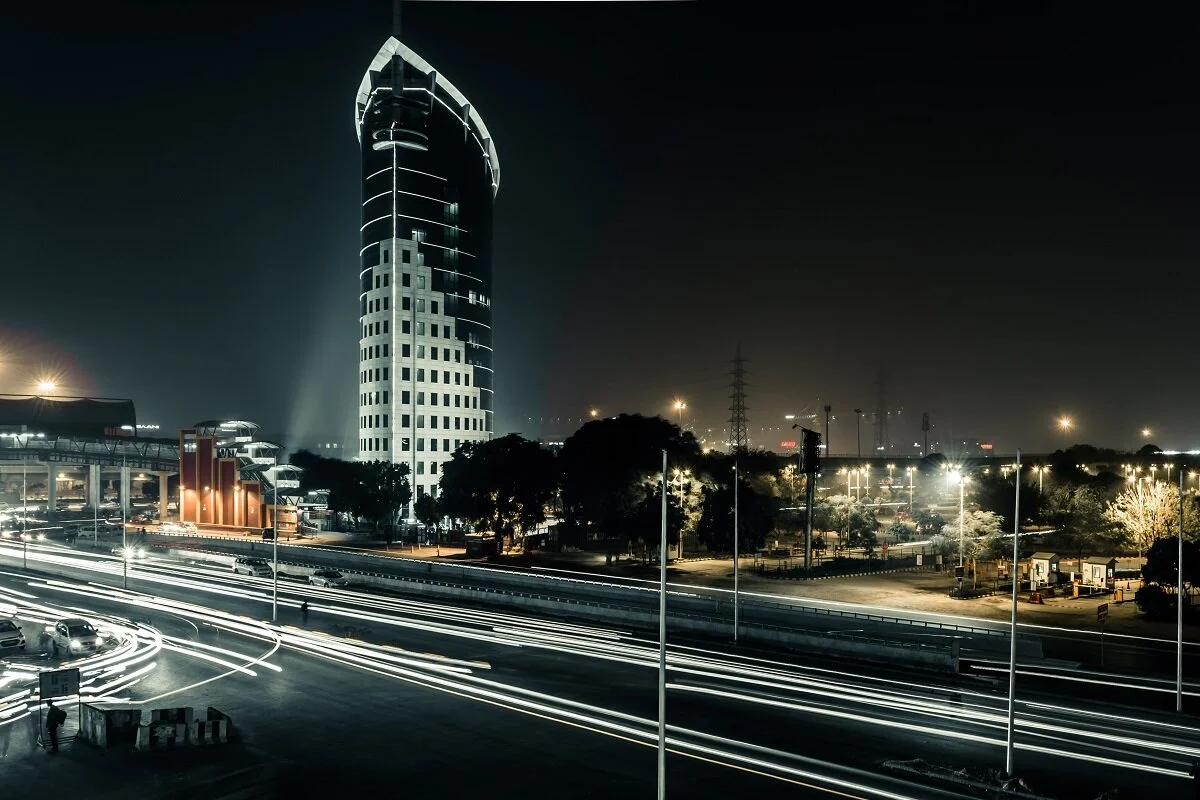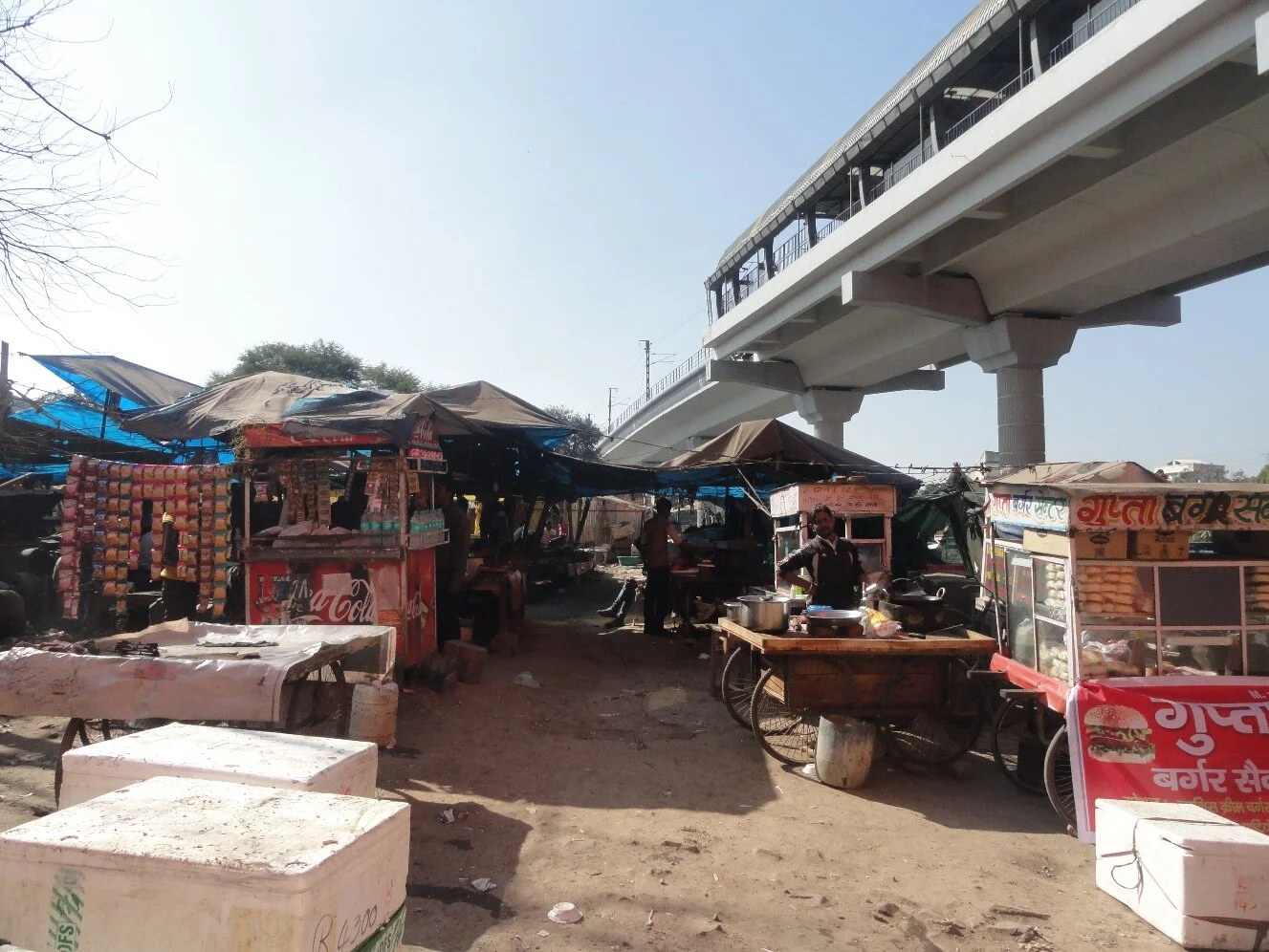Series: A Tale of Two Cities
What is the True image of Gurugram? projected city vs everyday city
By Swagata Das
Situated 30km south west of the capital New Delhi, the site that is now Gurugram consisted of agricultural villages until the beginning of the 21st century. With the economic reform of 1991, Gurugram presented a golden opportunity for the private sectors to fulfil demands of India’s growing high-tech sectors. Today Gurugram has transformed into a city which houses 250 of the Fortune 500 companies. An emerging icon of Indian modernity, Gurugram has displayed the strong role of private players in the urban development of the city. The forces of neo-liberalism that have shaped India’s ‘millennium city’ and has embarked it on its path to embrace global capital demonstrates distinct spatial language.
The spatial language of Millennium city in Gurugram
Gurugram - An Ideal Indian city for Expatriates
The image is from a Mobility Management company based in the millennium city with the above tagline.
(Source: ikan.com Aloksharmaphotography)
The spatial language of Millennium city is remarkably evident as one enters Gurugram. Catching a glimpse of the shining aluminium towers from toll plaza at the 8 lane Delhi Gurgaon expressway, one is greeted by the dazzling buildings of DLF city, designed by architect Hafeez Contractor sworn to creating a city that responds to the architecture of demand. The first encounter of this architecture is DLF Gateway Tower, a 12 storey complex marking the entrance to the city of DLF. This ship-shaped complex truly marks the gateway to Gurugram and a glimpse of the trends that city has adopted, totally oblivious to the site upon which it grows and adamant in producing a city of global identity.
The spatial language intended for the city is in sharp contrast to the Anglo- Indian vocabulary visible in the colonial and post-colonial times in India – the bungalows, quarters and compounds. This new language which King refers to as the ‘American-English capitalist’, distinctly produces images of being in an international environment composed of high rise towers, gated condominiums, malls, plazas and supermarkets. The city is constructed into complexes that usually house 3-4 multi-storey glazed buildings that emit ‘a luxury brand’ that architect Hafeez Contractor consciously inject in his designs. In the words of his biographer, Prathima Manohar:
“Architecture in the present day is shaped by market demand, real-estate calculations, zoning policies and municipal rules, more than any architectural philosophy preached by theorists. Hafeez acknowledges the context of the market which has always been ignored by the profession at large. He takes the clients aesthetics preferences as one of the key determinants while initiating a design. As a result, his architecture reflects the multitudes of preferences that the consumerist masses demand.”
From her words, the spatial language intended by Hafeez for the DLF city can be very easily grasped. This architecture of demand responds to the ‘global image’ and the diverse market by exploiting the vision of a futuristic ‘modern’ city.
The millennium city of Gurugram has another face which will be explored in the next essay.
The other city
Looking at Gurugram through the bird’s eye view makes one recall the words of Harvey.
“What is remarkable is not that urbanism is so different but that it is so similar in all metropolitan centres of the world in spite of significant differences in social policy, cultural tradition, administrative and political arrangements, institutions and laws, and so on.”
In case of Gurugram too, this dominant image imitates major metropolitan cities of the Global South. The everyday life of the city however reveal a different side to this shiny city. Gurugram has transformed from a dusty agricultural town into a city with global reach in a matter of a few years. However, directing attention to the ground level of the city, it does not take long to realize that much is still unchanged. Walking around the city one sees the social practices which are still rooted in traditions. The everyday urban life of the city is interpunctuate by these social practices.
Outside Rapid Metro (P.C.: Author)
While Gurugram is famous for its shiny malls, one can still find parked cars in front of fruit sellers while the owner enjoys a plate of fresh fruits on a hot day. While the rapid metro line boosts of its speed and technology, one is still at the whims of the auto-rickshaws to reach home from the metro station. This is in stark contrast to the global image that the city seeks to portray.
Everyday Gurugram (P.C.: Author)
Who is to say which of this world should exist, or even deserve to exist? Can one even exist without the other?
References/ Further reading:
King, A. (2004). Culture, globalization and the world-system. 1st ed. London: Routledge, p.151. 46. Brook, D. (2014). The Slumdog Millionaire Architect. The New York Times.
Manohar, P. (2006). Architect Hafeez Contractor- Selected works 1982-2006. 1st ed. Mumbai: Spenta Multimedia, p.19.
Harvey, D. (1973). Social justice and the city. 1st ed. Oxford: Basil Blackwell
What makes a city function?
Backdoor Cities



